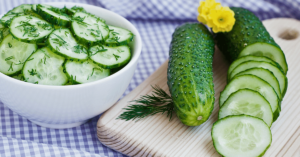When it comes to adding flavor and freshness to your dishes, chives are a must-have herb in your garden. Not only are they easy to grow, but they also offer a myriad of health benefits. Whether you’re a seasoned gardener or just starting out, growing chives from seed is a rewarding experience that allows you to enjoy the full life cycle of these savory herbs. In this comprehensive guide, we will take you through each step of the process, from choosing the right chive seeds to harvesting and utilizing them in your kitchen.
Choosing the right chive seeds
To ensure a successful chive-growing journey, it’s essential to start with high-quality seeds. When selecting chive seeds, opt for organic varieties that are free from any chemical treatments. Look for seeds that are plump, firm, and have a uniform color. It’s also a good idea to choose a variety that suits your taste preference, whether it’s common chives, garlic chives, or Siberian chives.
Preparing the soil for chive cultivation
Before you sow your chive seeds, it’s crucial to prepare the soil properly. Chives thrive in well-draining soil that is rich in organic matter. Start by removing any weeds or debris from the area where you plan to grow your chives. Loosen the soil using a garden fork or tiller to a depth of at least 8 inches. Incorporate compost or well-rotted manure to improve soil fertility and drainage. Aim for a slightly acidic to neutral pH level of around 6.0 to 7.0.
Planting chive seeds
Once your soil is prepared, it’s time to sow your chive seeds. Begin by creating shallow furrows in the soil, approximately ¼ inch deep. Space the furrows about 12 inches apart to allow room for the chive plants to grow. Gently scatter the chive seeds along the furrows, ensuring they are evenly distributed. Cover the seeds with a thin layer of soil and lightly press down to ensure good seed-to-soil contact. Water the area thoroughly but gently, using a fine mist or a watering can with a rose attachment.
Caring for chive plants
Chive plants are relatively low-maintenance, but they still require some care to thrive. Ensure that your chives receive at least 6 hours of direct sunlight each day. Water the plants regularly, keeping the soil consistently moist but not waterlogged. Mulching around the plants can help retain moisture and suppress weed growth. Avoid over-fertilizing, as it can lead to excessive foliage growth with reduced flavor. Instead, feed your chives with a balanced organic fertilizer once or twice during the growing season.
Harvesting chives
Once your chive plants reach a height of approximately 6 to 8 inches, you can start harvesting the leaves. Gently snip the outer leaves from the base of the plant, using clean and sharp gardening shears or scissors. Avoid cutting more than one-third of the plant at a time, as this can weaken its growth. Regular harvesting promotes new growth and ensures a continuous supply of fresh chives throughout the growing season. Remember to wash the harvested chives thoroughly before using them in your culinary creations.
Common pests and diseases affecting chives
While chives are generally resistant to pests and diseases, there are a few common issues to be aware of. Aphids and thrips can occasionally infest chive plants, causing damage to the foliage. Regularly inspect your plants and remove any pests by spraying them with a strong jet of water or using insecticidal soap if necessary. Chives can also be susceptible to fungal diseases such as powdery mildew and leaf spot. To prevent these issues, avoid overhead watering and ensure proper air circulation around the plants.
Tips for growing chives successfully
To maximize your chive-growing success, here are some additional tips to keep in mind:
- Divide and transplant your chive plants every 2 to 3 years to maintain their vigor.
- Trim back the flowers when they appear to encourage more leaf growth.
- Consider growing chives in containers if you have limited space or want to control their spread.
- Avoid using herbicides or pesticides near your chive plants to prevent contamination.
Culinary uses for chives
Chives are known for their delicate onion-like flavor and are a popular addition to a variety of dishes. They can be used fresh or dried, and their mild taste complements both savory and sweet recipes. Add chopped chives to omelets, salads, soups, and creamy sauces for a burst of flavor. They also make a fantastic garnish for baked potatoes, grilled meats, and seafood dishes. Chive blossoms can be used to infuse vinegars and oils, adding a touch of color and flavor to your homemade dressings.
Conclusion
Growing chives from seed is a rewarding and fulfilling experience that allows you to enjoy the freshness and flavor of this versatile herb. With the right seeds, proper soil preparation, and regular care, you can cultivate healthy chive plants that will provide you with a continuous supply of this savory herb. Whether you’re a seasoned gardener or just starting out, chives are an excellent addition to any garden. So why not embark on this journey and master the art of growing chives in your own backyard? Start today, and elevate your culinary creations with the vibrant taste of fresh chives.




